Steve Von Till talks 30 years of Neurosis and reveals his infamous Chain Of Death guitar rig
Ambient metal pioneer's gear secrets uncovered

Fires Within Fires
If there’s any band that epitomises the meditative aspect of music, using the ear as a lost portal for altered states of transcendence, it’s Neurosis.
Since their humble beginnings as a Bay Area hardcore band, they’ve managed to redefine the meaning of heavy music itself, bludgeoning our minds into states of transcendence with their own unique concoction of noise and ambience.
This year’s eleventh album, entitled Fires Within Fires, sees its five members continue their deep purge of the soul - taking the concept of spiritual elevation through sound to grounds new and unexplored. Guitarist Steve Von Till fills us in on an artistic ethos like no other…
“We don’t live in a literal musical landscape,” he explains. “Ours is way more about the implied emotion, the energy, the depth and feeling as opposed to the storytelling or dictating to people what they should feel from the music. For us, it’s way more vast and cosmic than me being able to explain exactly what it all stands for.
Every time we come to make new music, we open ourselves up to channel something greater than us
“Every time we come to make new music, we open ourselves up to channel something greater than us - which is Neurosis - this sound that exists in the universe. We’re just the lucky motherfuckers that get to tap into it!
“Everything we see, hear and feel goes into that - all the energies are present all around us and within us. The ability to traverse the trials and tribulations of everyday life, whether that be psychological struggles or contemplating our place in the world or relationships with nature… there’s a poetic and atmospheric meditation collage that comes together as music.”
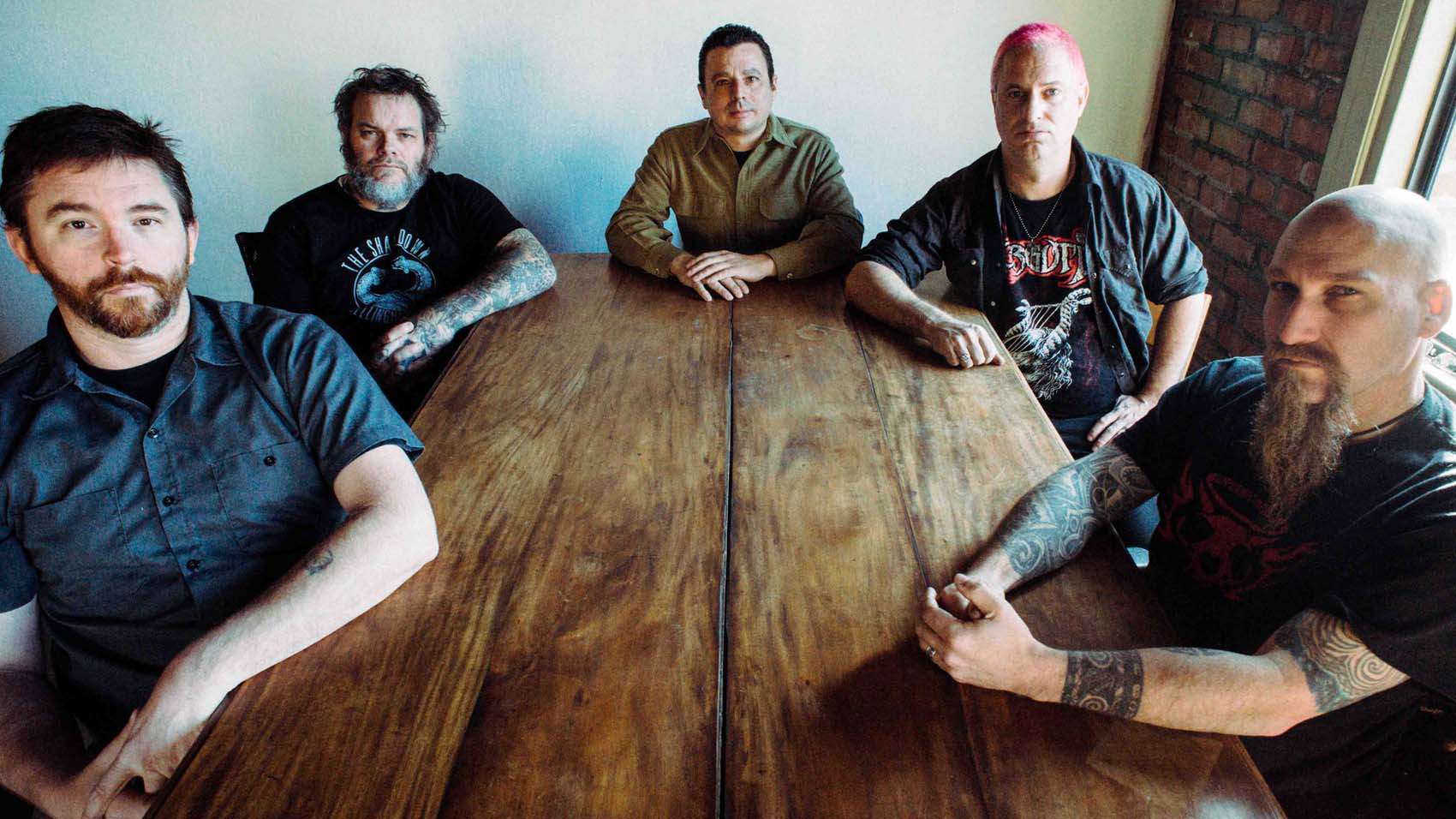
Heavy revelations
Listen to any Neurosis record and you’ll know just how profound and reflective these collages have come to be.
Theirs is an integrity like no other - submerged in an elusive anonymity virtually unheard of for a band so influential to music’s most visceral incarnations.
Driving, repetitive rhythms have become their gateway to trancelike states of higher realisation…
“That was one of our biggest revelations early on, after we’d blown the doors open,” continues Von Till.
“We wanted more instrumentation than just four guys playing hardcore punk. We expanded the sonic nature to capture this thing that was even bigger… learning to surrender to the repetition of heavy riffs that drive you into the ground.
“Understanding the hypnotic nature of music, sometimes it can be very disorientating. In order to get deeper, you need to be shaken out of your comfort zone.
“There’s almost a shamanic approach to it all; it’s not as deep or baked in tradition, but it’s the same idea. We’ve had moments of mysticism and complete reckless abandonment, spiritually and psychically, just because of the music we’re tapping into.
“We surrender to the sound, you have to in order for it to take you to new places and even deeper within yourself. Once we tasted that, we decided that’s what we wanted to dedicate ourselves to.”
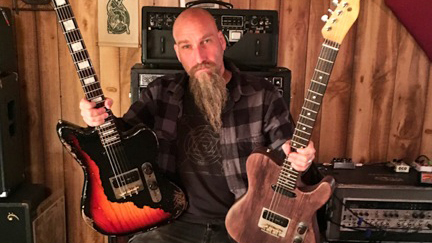
Chain Of Death: guitars
There have been various rundowns of Von Till’s infamous ‘Chain Of Death’ rig - few of which that are accurate, if you ask the man himself.
So we asked the Neurosis sonic alchemist to walk us through his equipment, once and for all... He did not hold back.
“Anything you’ve read has been misprinted!” laughs Von Till. “Here’s the actual rig, every step of the way.
Anything you’ve read has been misprinted! Here’s the actual rig, every step of the way
“I’ve got some core things that have never changed. Guitar-wise, I’ve always played Warmoth parts put together by friends. I recently retired my old Strat-shaped ones - their broken necks and bodies have been taken apart and put back together too many times. I’m kinda sick of the shape and black paint job.
“As I’ve gotten older, I’ve found myself preferring the fattest necks I can find. Using a vintage nut helps me get around it easier. There’s something about that baseball bat neck in my hands, because of the ham-fisted, caveman way I play, it just feels right. I don’t like to have my wrist around the neck; it stays underneath.
“The old necks I used were the 59 Roundbacks and then I went full Fatback! There are two shapes I’m sticking with now: a Telecaster with no finish, with a pickled and aged swamp ash body - it looks like it was just dug out from under a barn!
“It was put together by a guy called Keith Holland in Los Gatos, California. He dialled it all in for me and gave the neck a vintage feel, a clear finish with a vintage tint to the headstock. I love it.”
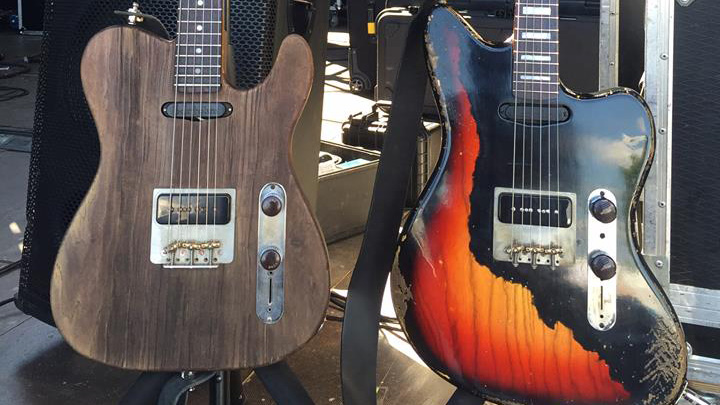
“I have an identical spec Jazzcaster, the same Fatback neck and swamp ash body, with big pearloid block inlays. I had it sent to a place I found online called MJT who do custom finishes - all that aged, distressed kinda stuff.
“I don’t like pickguards or routing for pickguards, and the great thing about a Tele cut on a Jazzcaster is that you keep all the wood. You don’t need extra space for the pickguards, you only cut out enough for the volume knobs and pickups.
“It’s really heavy and has a traditional sunburst finish, which looks like someone found a beautiful vintage sunburst Jazzmaster and started painting it black, then quit halfway - like some fuckin’ drug addict started painting over it and someone later recovered the guitar, sanding the black off. People can’t believe I paid for this finish - it looks like it’s been to hell and back… yet it’s brand-new!
People can’t believe I paid for this finish - it looks like it’s been to hell and back… yet it’s brand-new!
“My biggest revelation and change on this record is on pickups. I’ve always used a Bartolini neck pickup, but now I’ve given up on humbuckers altogether on the bridge. I went with slightly overwound Lollar P-90s after using humbuckers my whole life, which is what you get told you need for the heavy tones. Well, that couldn’t have been more wrong!
“The P-90s have way more frequency to them, less compression and much more open. You get convinced you need a hotter pickup, but that signal doesn’t necessarily mean a better tone. It just hits harder. There are so many ways of dialling shit into the back-end; you don’t need to do that to your guitar.”
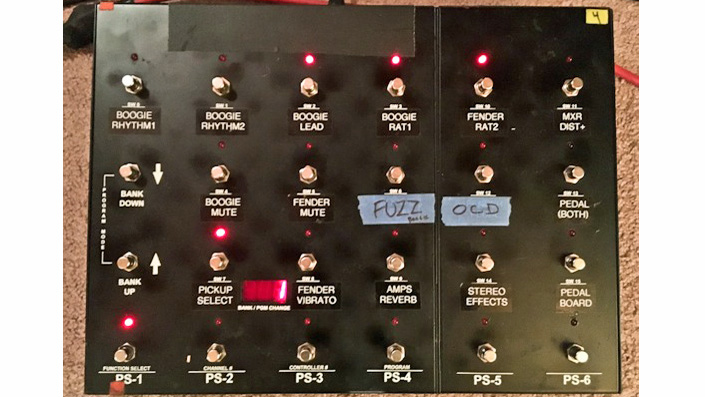
Chain Of Death: amps and switching
“Okay, so I have a pedalboard that comes in before my pedalboard. The cable leaves my guitar and then I have stereo jacks coming out. The two signals are both pickups - I don’t have selectors on my guitars. I send the neck out one line and the bridge out the other.
“The first thing it goes into is a box Bob Bradshaw from Custom Audio Electronics made for me - this footswitcher, a big black piece of metal that controls every function I use. The Bradshaw system controls all of it.
“The first thing it does is ask which pickup I want, and if I choose, I can have the neck coming straight out of the amp with nothing else added in. True bypass, nothing going on, totally clean without buffers or anything. But when I want to go to dirty, I use multiple amps and different distortion boxes. So, in one step I can choose all that and my pickup!
I have stereo jacks coming out. The two signals are both pickups - I don’t have selectors on my guitars
“For example, dirty could be bridge into the Boogie lead channel with a Keeley-modded Rat adding a tiny bit of gain, then on the Fender side it could be a different Rat pedal with full gain. So there’s a Boogie chain and a Fender chain.
“I usually play ’65 Twin Reissues and send it out loud and clean. At home or when I can drive my own gear, I have my 2x12 Garnett Session Man BTO combos, which are loud and clean - the perfect marriage between a Plexi and a Twin.
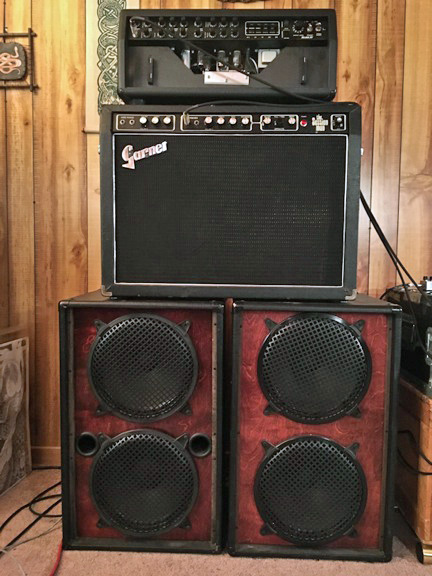
“It’s got the best tube tremolo you’ve ever heard, and when you pull the knob it goes half-time, super-slow and almost square-wave gate if you turn the depth up. It almost sounds like a strange Vox Repeater, really choppy. It goes way deeper than any Fender tremolo can go.”
“On the way to the Boogie, I’ve got that Keeley Rat, which I use in vintage mode. It kinda compresses and massages the Boogie MKIV, which has this Skynyrd on steroids kinda tone… not as high-gain as the other ones. But I found it a more interesting tone, smoothing it all out.
“The Fender side has a Rat with even more gain. For the half-gain tones, I go on the Boogie side, straight to the half-gain channel on a blues/crunch for my neck or an almost classic-rock tone for my bridge. My MXR Distortion+ also adds distortion on the Fender side. There are two racks within the Bradshaw switcher, which he calls my rat’s nest… I don’t think he likes it!”
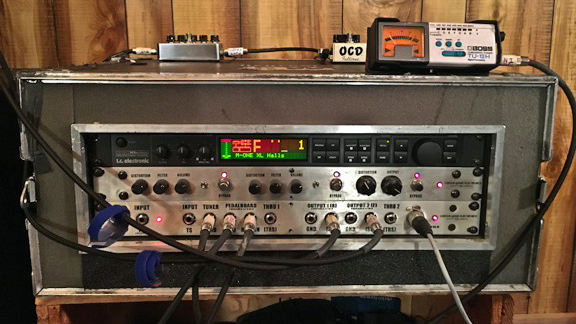
Chain Of Death: rack and pedals
“There are two racks within the Bradshaw switcher, which he calls my rat’s nest… I don’t think he likes it!
“Within that system, I’ve got different options before the split. Some things can affect both amp signals, so there’s a Fulltone OCD which I have several different settings for, from a clean boost to a bluesy gain to aggressive mid-gain.
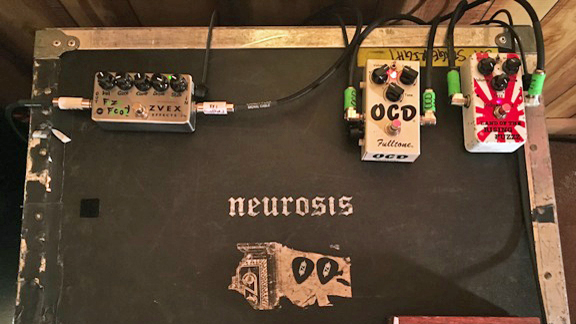
“There’s also a Land Of The Rising Fuzz made by Fridgebuzzz - it’s like a Shin-ei Companion tone, but way more fucked-up. It’s this really bizarre fuzz that I really love: super-hairy and super-zippery - this exaggerated late-'60s distortion that has so much character. Sometimes I’ll combine it with the Rat… so I guess I have a lot of options for gain!
“Also before the split, I have a front of stage pedalboard, which is all my modulation weirdness. It’s set up as one giant true bypass loop - the Bradshaw system allows me to skip that 60 feet of cable at the touch of a button. I can mute both amps for different dynamics or add in the OCD, or whatever vibrato and reverb.
“I’ve changed the pedalboard a lot over the years. There’s a large one and a small one - it all depends on what kind of set we’re playing. On the current record and last couple of tours is an Electro-Harmonix Bass MicroSynth, which I’ve always used ever since I got it. I like the vintage one best because it’s more creamy, but they’re getting harder to find so I retired it for the modern one.
“Then I go to the wah, but I’m not a traditional wah player. I don’t do solos; I use it for slow filter sweeps. I’m using the Chicago Iron Parachute, which is a clone of the Parawah. It’s a giant, big blue beast, and I just recently picked up a Wilson effects clone of the same pedal.
“That pedal almost has a phase nature to it - this throaty midrange growl in the sweep. It goes down to all the subsonics when you go to the heel side; it can make you disappear. There’s a wider sweep that makes you want to dig your heels in - it feels pretty rewarding compared to a flimsy little thing.”
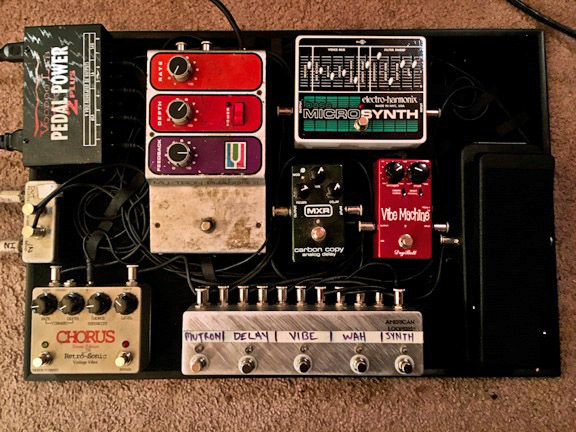
“After that, I go to a vibe - the one I’m using now is called DryBell Vibe Machine. It’s a very small MXR-sized box that sounds both unique and traditional at the same time. I think they’re made in the Eastern Block, which is pretty cool. I read some reviews, and these David Gilmour nerds online were all saying how great this was. I also used the Mojo Vibe from Sweet Sound.
“Then there’s an MXR Carbon Copy for dark, repeating delays. I’ve spent a lot of time trying to find the right sounds. When something becomes three-dimensional, I tend to like it. If it doesn’t make the cut, I’ll carry on looking for and pay for the right piece of gear. I geek out a lot and track it all down!
“After the delay is the Mu-Tron Phasor II. That’s the mother of all phasers - all the others seem one-dimensional to me. It’s the better half of the Mu-Tron Bi-Phase, which is a must for home-studio filter nerds! I’ve got one of those, too. You can hear it all over every record since [2004’s] The Eye Of Every Storm. There are entire parts where I play one note over two minutes using this phaser at a slow speed because I can disappear in it; it’s the perfect sweep. It’s hard to find and really expensive - I’ve got three and only one sounds right. That’s the one that goes out!
I’ve spent a lot of time trying to find the right sounds. When something becomes three-dimensional, I tend to like it
“The last piece, which is new for me, is the Retro-Sonic Chorus. I guess it’s modelled after some chorus everyone likes, maybe a Roland. It’s proper analogue old-school stuff made by this Canadian company who make it really true to that vintage sound.
“I’ll turn off the MicroSynth and the wah, leaving the rest on. That in itself becomes its own ambient music generator.
“I just love the filters and modulation. I like being able to create textures that are not necessarily normal guitar parts. There have been moments on Neurosis records where people think our guitars are synths or keyboards. We like manipulating things like that.
“I’ve had a POG, Moogerfooger Ring Mod, different things, but these are my bare bones. So, there you have it!”
You can hear the Chain Of Death in action on Fires Within Fires, which is released on 23 September via Neurot Recordings.
Neurosis play Koko, London on 7 and 8 November.
Amit has been writing for titles like Total Guitar, MusicRadar and Guitar World for over a decade and counts Richie Kotzen, Guthrie Govan and Jeff Beck among his primary influences. He's interviewed everyone from Ozzy Osbourne and Lemmy to Slash and Jimmy Page, and once even traded solos with a member of Slayer on a track released internationally. As a session guitarist, he's played alongside members of Judas Priest and Uriah Heep in London ensemble Metalworks, as well as handling lead guitars for legends like Glen Matlock (Sex Pistols, The Faces) and Stu Hamm (Steve Vai, Joe Satriani, G3).
